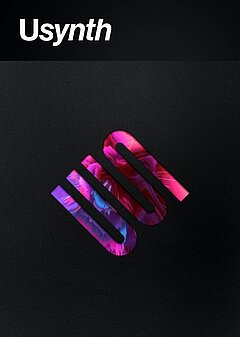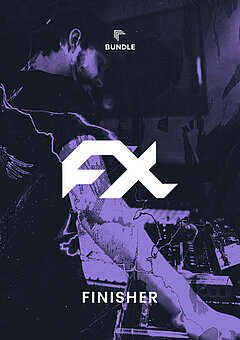The State of Music Distribution in 2022
Where and how to release your music to grow and diversify your music business (and why streaming isn’t the only answer)
AUGUST 14TH, 2022
Are you interested in monetizing your music as successful as possible? If your answer is yes, you should carefully read until the end of this article and find out about some of the best performing ways and formats of selling your songs to music loving people all over the world:
Streaming
While this might seem like the obvious first choice for distributing music, it’s also the easiest to misunderstand. Streaming is often touted as a tool for generating awareness more than anything else, with the qualification that artists shouldn’t expect to make any real money from their music itself. However, this notion is misguided — there’s still plenty of money to be made directly from your music, as you’ll see shortly, and streaming is no exception. The payout per stream is very small on every platform, a fraction of a cent. Clearly a few streams don’t make up a substantial revenue source ... but multiplied over the course of a million+ streams, this will likely add up to thousands of dollars.
The key with streaming is to be patient; the ultimate goal on Spotify (arguably the most valuable streaming platform to be on at the time of writing) to shoot for is getting on playlists with plenty of listeners tuning in every day, which in turn will increase the likelihood of the platform promoting your music to more people. The discovery aspect is critical, but if you use it to your advantage, it can also be a valuable source of revenue for your music business!
Vinyl
Many listeners are flocking to vinyl in part to own a physical product created by an artist they love, but also for the “warmth” they feel is unique to this medium. If you’ve heard this idea thrown around extensively but aren’t quite sure what to make of it, here’s the simple version: vinyl has to be “cut” with grooves representing the waveform of a song in order to be played back. A record player uses a physical playhead to interpret those grooves as sound.
However, this process is nonlinear in nature — because the groove can never be a perfect representation of a waveform due to the resistance of the vinyl itself, and because of the additional nonlinear interaction of the grooves with the playhead during playback, the result is an imperfect representation of the sound. Nonlinear relationships in audio cause waveshaping, a particular type of distortion that, in the case of vinyl records, is often pleasing to the listener.
If your fans enjoy listening to vinyl and you have the budget (more on that in the next section), this can be an incredibly valuable medium to add to your roster for both future and past releases! Plenty of companies have emerged to help artists cut their music into vinyl, such as Gotta Groove Records or Erika Records.
CDs
It’s easy to assume that between the rise of streaming and resurgence of vinyl, CD sales no longer have a place in the modern-day music industry. While CDs will likely never make up the lion’s share of music revenue again, they still fill a few key gaps opened by the massive shifts in the industry.
One aspect of this is the minimal expense to musicians and producers. It costs very little to create and distribute CDs vs. vinyl records (which can easily cost over $10 per record to print) — unless you’re an established artist, the manufacturing costs can be prohibitive. For fans who want something physical primarily for ownership and not the analog quality of vinyl, CDs do the job nicely and come without a hefty price tag.
Another factor is the ability to import uncompressed audio onto a computer, which is a nice perk ... but there’s a more effective way to approach this, which we’ll cover next.
Digital downloads
Looking at the success of Bandcamp, it’s clear there’s still a healthy market for digital downloads. Many fans are often more than happy to reward artists for their hard work and the expenses involved in creating music, and paying for a direct download remains the fastest and most efficient way to do so! In this case, the deliverable itself is less important than the desire to support the artist, but there are plenty of listeners who love the idea of owning a song forever in maximum uncompressed quality. Sites like Bandcamp offer a range of hi-res file types such as .wav, .flac and more ... and to the true enthusiast, quality is everything.
Of course, there’s another advantage of digital download that’s unique to producers, engineers and more: the ability to import songs into a DAW for reference purposes! If your music appeals heavily to bedroom producers (this is incredibly common with sound design-heavy genres like dubstep), digital downloads are the best way to get top-quality reference masters. CDs don’t have the same usefulness here as they are capped at 16 bits, which creates a low level of digital noise not present at higher bit depths like 24 and 32. Since every major streaming platform uses loudness matching to create consistency between songs, it’s nearly impossible to have the right reference volume without owning uncompressed downloads of your references!
Single, EPs, albums
Now that you’re more familiar with the tradeoffs of some of the most common release methods, the question remains — how should you package your songs together? There are countless variables that can factor into this decision, but to keep things simple we’re going to reduce it down to just one question:
How frequently do you release music?
If the answer is any version of “not very”, opt for singles. The more often you release new material, the more touch points you create for your fans. If your output is limited to one song a month, it’s better to put out one single per month and have 12 per year vs. a single album only once a year! More frequent is better of course, and if you can bump your cadence up to multiple albums every year, that could very well be the best option!
Wrapping up
There are still plenty of income opportunities for musicians outside of streaming alone. You might be surprised to find that many fans will happily pay to listen to and own your music in multiple formats! We have more opportunities than ever to connect with the artists we love, and there are countless opportunities for monetizing with “old” and “outdated” formats that offer an experience we simply can’t get by popping open a streaming app and recalling someone’s entire discography in a moment.
There’s a lesson as old as time: Listen and your customers might just tell you exactly what they want. So don’t be afraid to ask! If it turns out your fans are chomping at the bit for vinyl, CDs, or any other medium (and you can provide it at a good price), everyone wins!
About the Author
Harry Lodes is a copywriter, marketing consultant and content writer for audio and ecommerce brands. He lives in the Philadelphia area, releasing Eastern/Western hybrid EDM under the artist name KAIRI hearkening back to his roots in Berklee College of Music.
Stay Up To Date
Sign up and we’ll send you an e-mail with product news and helpful stuff every now and then.
Defy Limits
We develop software solutions that enable people to create, consume and interact with music.





